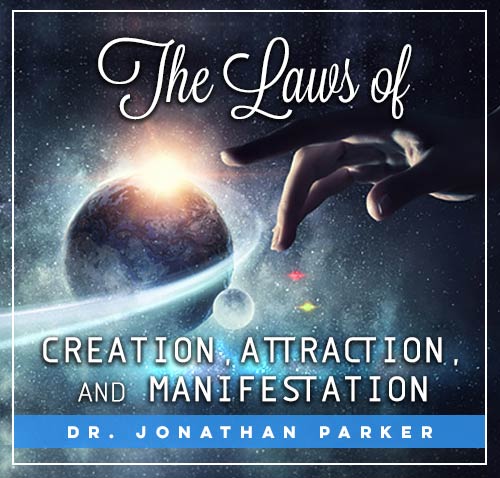The Law of Attraction: Exploring the 2004 Movement

Before diving in, please note: This post is for informational purposes only. If you’d like to know more about how we approach topics, feel free to check out our friendly Disclaimer Page.
Hey there, amazing readers! 🖐️ Just a quick note: yes, we know there are a lot of ads here. Trust us, we get it—it’s not the prettiest look, but they help us keep this blog alive and kicking. Those pesky little ads cover the costs of all the behind-the-scenes magic, from hosting and tech stuff to creating content we hope you’ll love.
We’re committed to delivering quality posts, and your support (even just sticking around despite the ads) means everything to us. So, bear with us, and thanks for helping us keep the good vibes rolling. Now, on to the fun stuff! 😉
TRANSLATE BUTTON AT THE END OF THE ARTICLE
The Law of Attraction: Exploring the 2004 Movement
A Quick Overview
The Law of Attraction has captured the imagination of many individuals over the years.
But it truly surged into the public consciousness around 2004, sparking debates, interest, and a wave of followers.
The concept is simple but profound: like attracts like.
In essence, our thoughts and feelings radiate energy that draws experiences, people, and circumstances into our lives.
This article delves into the movement that began in 2004, exploring its origins, key concepts, cultural milestones, and enduring legacy.
Unveiling the Law of Attraction: A Brief Overview
The Law of Attraction is rooted in the principle that our thoughts manifest into reality.
It suggests that positive or negative thinking can impact our experiences.
This idea isn’t new; it’s been part of philosophical traditions for centuries.
However, in the early 21st century, it gained renewed popularity.
Think of it this way: if you wake up and focus on all the things that could go wrong, chances are your day might reflect those worries.
Conversely, if you greet the day with optimism, you’re more likely to find silver linings.
At its core, this law invites us to take responsibility for our lives.
By changing our mindset, we can transform our circumstances.
In recent years, the advent of social media and online platforms has made sharing these ideas easier.
Success stories and testimonials proliferated, creating a community of believers who encouraged one another.
This camaraderie has fueled the movement’s growth.
The Origins: Where Did the Law of Attraction Begin?
The Law of Attraction has roots that trace back to ancient philosophies.
Think about the teachings of Buddha, or even the principles of Hermeticism, which emphasize the connection between thoughts and the universe.
However, the modern conception began crystallizing in the 19th century with the New Thought movement.
This movement emphasized the power of the mind and the belief that thoughts can shape our lives.
Figures like Phineas Quimby, who believed in the healing power of the mind, laid the groundwork for future thinkers.
In the 20th century, authors like Ernest Holmes and Charles Fillmore further popularized these concepts.
The 2004 revival, however, can be pinpointed to the release of a book and film that presented the Law of Attraction in a digestible format for the masses.
Although the roots run deep, the 21st century breathed fresh life into the concepts, allowing them to resonate with a new generation.
Key Concepts: How Does the Law of Attraction Work?
Understanding how the Law of Attraction works involves grasping a few fundamental concepts:
Thoughts Are Energy: Everything in the universe vibrates at a certain frequency, including our thoughts.
By focusing on positive thoughts, we emit a positive frequency.
Visualization: Picture your goals vividly.
Whether it’s a dream job or a happy relationship, visualize it daily.
This technique is said to help align your energy with your desires.
Gratitude: Expressing gratitude shifts our focus from what we lack to what we have.
A grateful mindset attracts more positive experiences.
Belief: We must believe that our desires are attainable.
Doubt can sabotage our efforts, so cultivating a strong belief system is crucial.
Action: While thoughts create energy, actions manifest those thoughts.
Taking steps towards your goals is essential in this process.
When these elements come together, they create a powerful synergy, enabling individuals to attract their desires into their lives.
It’s not just wishful thinking; it’s about aligning your mindset and actions with your goals.
The 2004 Phenomenon: A Rise in Popularity Explained
The year 2004 marked a significant turning point for the Law of Attraction.
This surge in interest can be attributed to the publication of "The Secret," a book by Rhonda Byrne.
It quickly became a bestseller, captivating millions with its promise of personal transformation.
Byrne’s work presented the Law of Attraction in a straightforward manner, combining elements of self-help and spirituality.
The accompanying film further amplified its reach, turning abstract concepts into relatable experiences.
Suddenly, people from all walks of life began to explore the idea that they could shape their destinies through their thoughts.
Additionally, the rise of social media during this period played a crucial role.
Platforms like Facebook and Twitter enabled users to share their experiences and successes, creating a sense of community.
People started forming groups to discuss the Law of Attraction, share tips, and inspire one another.
The combination of an accessible message, engaging storytelling, and community support turned 2004 into a cornerstone year for the movement.
It empowered individuals to take control of their lives, tapping into an age-old wisdom that felt fresh and exciting.
The Impact of "The Secret": A Cultural Milestone
"The Secret" didn’t just popularize the Law of Attraction; it became a cultural touchstone.
Suddenly, everyone was talking about manifestation, vision boards, and positive affirmations.
This book and film introduced the ideas of the Law of Attraction to a mainstream audience, igniting conversations in coffee shops and classrooms alike.
Critics and supporters alike engaged in discussions, which heightened interest.
Some skeptics dismissed it as pseudoscience, while supporters celebrated its life-changing potential.
The debates added layers to the movement, prompting people to explore the concepts more deeply.
Moreover, "The Secret" inspired a wave of subsequent literature, workshops, and seminars aimed at diving deeper into the principles of attraction.
Authors like Esther Hicks and Joe Vitale gained prominence, further expanding on the ideas introduced by Byrne.
The impact of "The Secret" went beyond individual transformation; it influenced industries like coaching, wellness, and even corporate training.
The notion that mindset can drive success started creeping into business philosophies.
Voices of Change: Influential Figures in the Movement
Several key figures emerged during the 2004 movement, championing the Law of Attraction.
Rhonda Byrne is, of course, one of the most recognizable names.
Her ability to distill complex ideas into relatable narratives was groundbreaking.
Esther Hicks, who channels a group of spiritual entities known as Abraham, became another pivotal voice.
Her teachings on emotional guidance and the importance of vibration resonated with many.
Hicks’ workshops and books encouraged people to connect with their inner selves.
Then there’s Joe Vitale, a marketing expert who infused the Law of Attraction with practical business advice.
His works, such as "The Attractor Factor," demonstrated how the principles could be leveraged for entrepreneurial success.
Other noteworthy figures include Jack Canfield, co-creator of the "Chicken Soup for the Soul" series, and Michael Losier, who clarified the steps to manifesting desires.
Each of these voices contributed to the movement’s momentum, creating a diverse tapestry of teachings.
Real-Life Stories: Successes Attributed to the Law
What makes the Law of Attraction so captivating is the multitude of real-life success stories.
Individuals have shared their journeys of transformation, often attributing their achievements to the principles they embraced.
Take, for example, a woman who was struggling with her career.
After embracing the Law of Attraction, she began visualizing her dream job and expressing gratitude for her skills.
Within months, she landed a position that exceeded her expectations.
Another story involves a couple who had faced challenges in their relationship.
By practicing gratitude and focusing on love, they revitalized their connection, eventually celebrating their anniversary with renewed passion.
These narratives prove that the principles can lead to tangible results.
They inspire those who are skeptical to reconsider their perspectives.
The Science Behind Belief: Psychology and Attraction
While the Law of Attraction leans heavily on spiritual and philosophical principles, there’s a psychological aspect worth exploring.
Psychology suggests that our beliefs shape our reality.
This notion isn’t far from the Law of Attraction’s premise.
Cognitive behavioral therapy (CBT) highlights that changing our thought patterns can lead to altered emotions and behaviors.
Similarly, the Law of Attraction encourages individuals to shift their focus from negatives to positives.
Research into the power of positivity further supports these concepts.
Studies show that optimistic individuals tend to experience better health, improved relationships, and greater success.
This aligns neatly with the idea that positive thoughts attract positive outcomes.
Additionally, the placebo effect in medicine demonstrates how belief can create physical changes.
If our minds can influence our bodies, could they also influence our experiences?
It’s a compelling question that invites further exploration.
Practical Tips: How to Implement the Law Daily
If you’re interested in incorporating the Law of Attraction into your life, here are some practical tips:
Create a Vision Board: Gather images and words that represent your goals.
Place it somewhere you’ll see daily.
Practice Daily Gratitude: Each morning, write down three things you’re grateful for.
This helps shift your mindset.
Use Positive Affirmations: Repeat affirmations that resonate with your goals.
Say them out loud with conviction.
Visualize Your Goals: Spend a few minutes each day picturing yourself achieving your dreams.
Feel the emotions associated with it.
Surround Yourself with Positivity: Engage with people who uplift you.
Their energy can influence your mindset.
Take Inspired Action: Don’t just sit back and wait.
Follow your intuition and take steps towards your goals.
Meditate: Spend time in quiet reflection.
This practice can help clear your mind and focus on your intentions.
Be Open to Opportunities: Sometimes, the universe presents possibilities in unexpected ways.
Stay open and receptive.
Reflect on Your Progress: Regularly assess your journey.
Celebrate the small victories along the way.
Stay Consistent: Like any practice, consistency is key.
Make these habits part of your daily routine.
Common Misconceptions: Myths About the Law Explained
As with any popular concept, the Law of Attraction is not without its misconceptions.
Here are a few myths debunked:
It’s Just Wishful Thinking: Critics often dismiss it as unrealistic.
However, it’s more about aligning thoughts and actions towards a goal.
It Promises Instant Results: People may think you can just wish for something and it magically appears.
While manifestation takes time, it requires dedication.
It Ignores Reality: The Law of Attraction doesn’t suggest ignoring problems.
Instead, it encourages a constructive approach to addressing challenges.
It’s All About Positivity: While positivity is essential, it’s also about acknowledging and processing negative emotions.
Only Some People Can Use It: Anyone can harness the Law of Attraction.
It’s about mindset and willingness to change.
Understanding these misconceptions can help clarify what the Law of Attraction truly embodies.
It’s a journey of personal growth, not just a quick fix.
The Law of Attraction Today: Current Trends and Insights
Today, the Law of Attraction continues to thrive.
The concepts have evolved, with practitioners exploring new dimensions like emotional intelligence and mindfulness.
Social media influencers often share their journeys, spreading the message to a broader audience.
Platforms like Instagram and TikTok feature hashtags such as #Manifestation and #LawOfAttraction, creating vibrant communities of like-minded individuals.
Additionally, there’s a growing emphasis on mental health and wellness, intertwining with the principles of the Law of Attraction.
People are increasingly recognizing the power of mindset in achieving emotional and psychological well-being.
As the movement progresses, it’s becoming more inclusive.
Diverse voices and experiences are shaping the narrative, allowing the Law of Attraction to resonate with a wider audience.
Looking Ahead: The Future of the Law of Attraction
What does the future hold for the Law of Attraction?
I believe it will continue to evolve as we learn more about ourselves and our interactions with the universe.
As societal values shift towards mindfulness and emotional well-being, these principles are likely to become even more relevant.
Emerging research in psychology and neuroscience will further illuminate how our thoughts influence our realities.
This scientific backing could bolster the movement, inviting those who are skeptical to engage.
Moreover, the integration of technology, such as apps focused on mindfulness and visualization, offers exciting avenues for practice.
Accessibility to resources and communities will enhance support for individuals exploring these concepts.
In conclusion, the Law of Attraction represents a powerful framework for personal transformation.
Through understanding its origins, principles, and evolving narrative, we can harness its potential to create the lives we desire.
Whether you’re a staunch believer or just curious, the journey into the Law of Attraction is a fascinating exploration of self and the universe.
Conclusion
The 2004 movement surrounding the Law of Attraction has left an indelible mark on our culture.
It invited countless individuals to reconsider their lives and embrace the idea that their thoughts could shape their realities.
As we continue to explore these concepts, the Law of Attraction remains a beacon of hope and possibility.
Whether through shared stories, practical tips, or the community that has formed around it, this movement encourages us all to dream big and manifest our desires.
Let’s keep the conversation going and explore the endless possibilities that await us!

The Enlightenment Journey is a remarkable collection of writings authored by a distinguished group of experts in the fields of spirituality, new age, and esoteric knowledge.
This anthology features a diverse assembly of well-experienced authors who bring their profound insights and credible perspectives to the forefront.
Each contributor possesses a wealth of knowledge and wisdom, making them authorities in their respective domains.
Together, they offer readers a transformative journey into the realms of spiritual growth, self-discovery, and esoteric enlightenment.
The Enlightenment Journey is a testament to the collective expertise of these luminaries, providing readers with a rich tapestry of ideas and information to illuminate their spiritual path.
Our Diverse Expertise 🌟
While our primary focus is on spirituality and esotericism, we are equally passionate about exploring a wide range of other topics and niches 🌍📚. Our experienced team is dedicated to delivering high-quality, informative content across various subjects ✨.
To ensure we provide the most accurate and valuable insights, we collaborate with trusted experts in their respective domains 🧑🏫👩🏫. This allows us to offer well-rounded perspectives and knowledge to our readers.
Our blog originally focused on spirituality and metaphysics, but we’ve since expanded to cover a wide range of niches. Don’t worry—we continue to publish a lot of articles on spirituality! Frequently visit our blog to explore our diverse content and stay tuned for more insightful reads.






